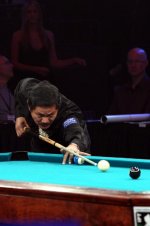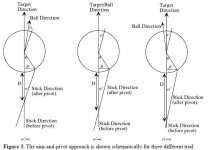how does the length of your bridge equate to accuracy? or does it really matter if you use a long or a short bridge?
i've read in some books and several instructional articles that short bridge lengths (around 7 -9 inches) makes your game more accurate. yet i've rarely seen a top pro with such short bridge length. in snooker, where accuracy is a priority, top pro's i've seen uses long bridge lengths. so, what is the truth about bridge lengths?
i've read in some books and several instructional articles that short bridge lengths (around 7 -9 inches) makes your game more accurate. yet i've rarely seen a top pro with such short bridge length. in snooker, where accuracy is a priority, top pro's i've seen uses long bridge lengths. so, what is the truth about bridge lengths?

